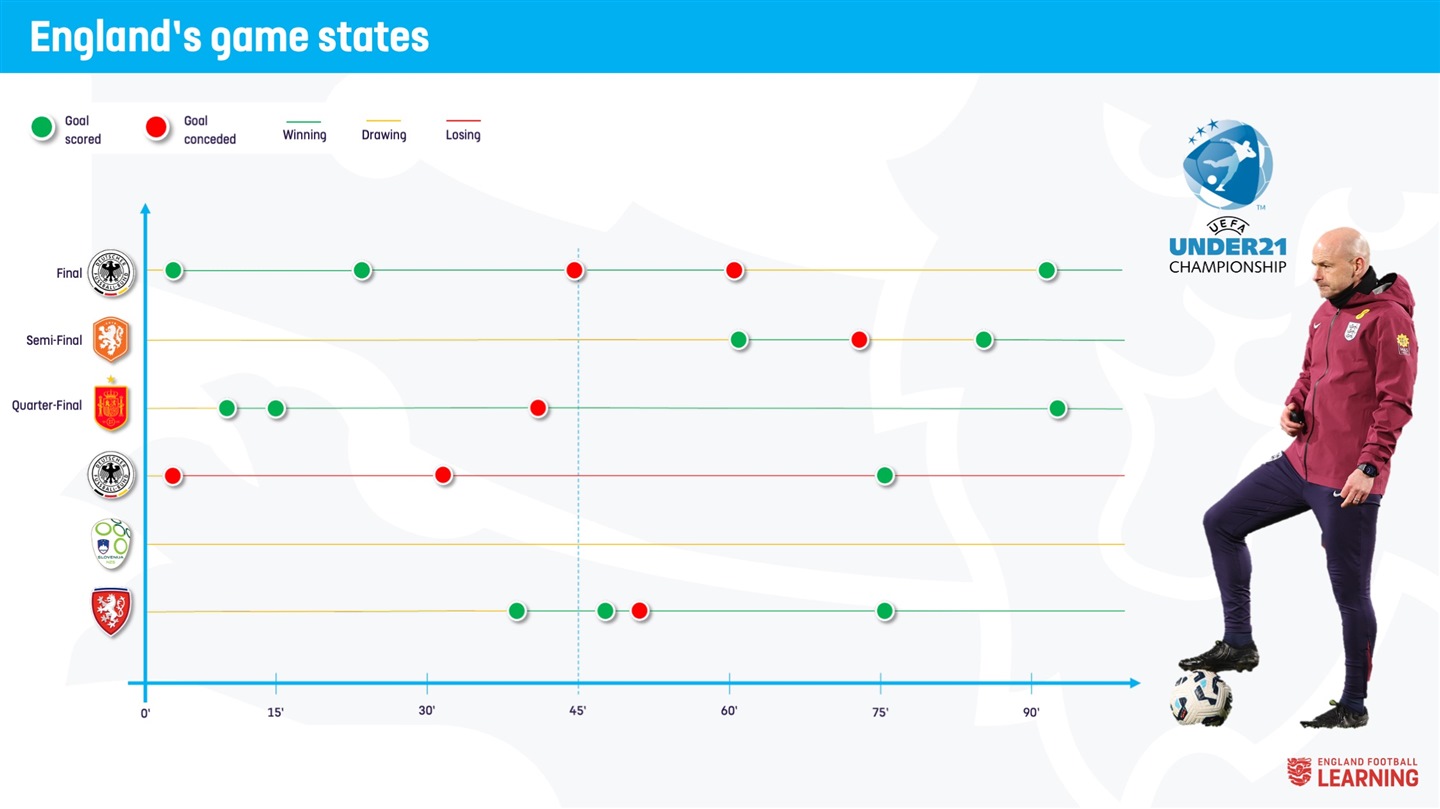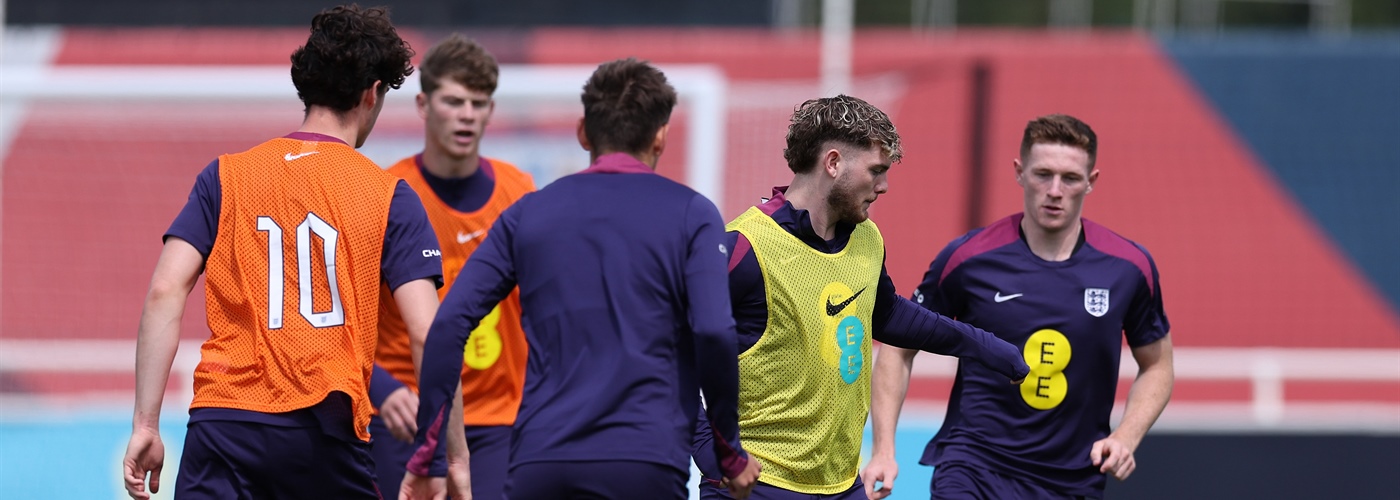Aligning training to reflect matchday experiences is worthwhile for developing players who can manage the scenarios they’re likely to face between the first and last whistle.
Football is unpredictable, so developing decision-makers who can cope in all situations is key. As coaches, we too must develop our ability to observe changes and make in-game decisions to benefit the team.
Learning from the best
Lee Carsley’s young superstars have just achieved back-to-back successes by retaining the title of Men’s U21 European Champions. Despite winning the previous tournament without conceding a single goal and the wealth of talent available in the current squad, this time around, a different kind of resilience was needed. It’s clear from Carsley’s comments that aligning training to matchday plays a big part in his success.
"We thought outside the box with our training, about tactics and with the way we wanted to play with our squad selection.
"All these instructions we've tried to put into them have been taken on board so quickly. This squad believe that they can win and that's the kind of players we need."
Let’s look at England’s journey throughout their six-game winning campaign…

When we display the games across the 90-minute timeline, we can observe that England scored a total of 12 goals across the tournament and conceded 7 goals. Only in their group stage game against Slovenia, they did not score or concede.
The games were exciting, with plenty of twists and turns throughout. This increased the importance of successfully navigating common game scenarios when they arose. Further observation of the game state map presents one of these game scenarios.

What can you see in each of the areas highlighted within the graphic above? England won 4 of their 6 games in the competition, and during every single victory, they experienced and overcame conceding a goal when winning. They say 2-0 is ‘the most dangerous scoreline in football’, and against Czechia, Spain and the final against Germany, this could well have been the case. Yet, England wrote their own script. Carsley and his coaching team refused to accept any changes in momentum in favour of their opponents.

Practical considerations for training
England scored the final goal in all five of the games they scored in. This displays an impressive ability to perform after the 75-minute mark and overcome challenges. What might Lee Carsley and his team have implemented during training that scoring again after conceding became a habit?
This article gives a helpful guide on planning for different game states, phases and moments. It recommends the following ideas to try in training:
- Split your players into two teams and give each side a different strategy to execute. Ask one side to press high while the other sits in a low block and looks to counter quickly.
- Play small-sided games where one side is overloaded and the other is underloaded.
- Try a match scenario. Or play a game but keep the score. After a while tell them they’re into the final five minutes of a big match and need to try to secure a result. Have a short break to allow teams to rest and create a plan for the remainder of the game. Then see how the two teams approach it. This could make the scenario feel less staged as the players have actually taken part in it.
Summary
Momentum plays a huge part in the outcome of football matches, and it’s why we love it. Rarely does a team dominate constantly for the whole game, so we as coaches need to prepare our players to adapt to these changes, whether winning, drawing or losing.
Keeping score and using time limits adds a competitive realism to training sessions. Check in with your players and observe how they cope when they achieve success or face adversity during a game. Like anything, practicing these situations exposes players to experiences which help them make better decisions on a matchday.


